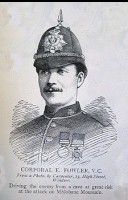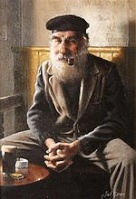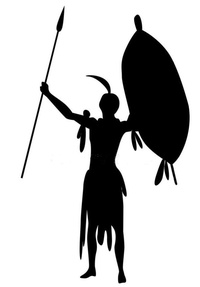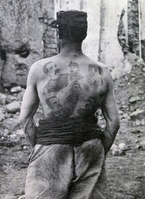| Latest topics | » The Pictorial World - March 15th 1879 Yesterday at 1:13 pm by ben2000 » The lost diary of Pvt James Owen Thu Jul 25, 2024 12:03 pm by miklew » Last of the 24th at Isandhlwana Wed Jul 24, 2024 6:16 pm by John Young » What was the uniform of field marshals/generals in the zulu war? Mon Jul 22, 2024 6:53 am by John Young » Henderson and the NNH at Rorke's Drift  Sat Jul 20, 2024 12:17 pm by SRB1965 » Capt. D. Hayes 1/3rd Regt., NNC Thu Jul 18, 2024 11:11 am by Julian Whybra » The Wrecked Camp Wed Jul 17, 2024 4:33 pm by Julian Whybra » Private N/N John Robert Branch 90th Regiment and his discovered diary Mon Jul 15, 2024 8:53 pm by 1879graves » Private John Scott 24th Regiment a fugitive at large Sun Jul 14, 2024 12:06 pm by 1879graves » 90th foot sgt T. Collins 214 Sun Jul 14, 2024 10:57 am by johnman » Baron Von Steitencron Wed Jul 10, 2024 3:10 pm by Julian Whybra » Sgt Joseph Windridge, Defender of Rorke's Drift - Memorial Tue Jul 09, 2024 3:15 am by 90th » Writing advice Sun Jul 07, 2024 4:04 pm by Julian Whybra » South Africa 1877-79, 1 clasp, 1877-8-9 (4389 Fr. Sergt. S. Smith. O/2. Bde. R.A.) Sun Jul 07, 2024 9:30 am by rai » The trashing of the Zulu monument to the brave warriors at Isandlawana March 12, 2024 has been blamed on scrap metal scavengers. Thu Jul 04, 2024 7:41 pm by ADMIN» The Goodwill Zulu Festival: Celebrating the Welsh and KwaZulu Natal Shared Heritage. Thu Jul 04, 2024 7:27 pm by ADMIN» Any nominal role of G Coy 2/24th regiment  Thu Jul 04, 2024 11:18 am by Wayne » Bassage Diary Thu Jul 04, 2024 9:31 am by Julian Whybra » Prior to Sihayo's Kraal  Thu Jul 04, 2024 9:19 am by 90th » British Fort Locations Thu Jul 04, 2024 3:40 am by 90th » Sergeant 1064 Tom Hick / Hicks G Company 2/24th Regiment Wed Jul 03, 2024 11:05 am by Julian Whybra » A Hungarian soldier in the Zulu War (?) Fri Jun 28, 2024 2:31 pm by Mr M. Cooper » Private 25B/279 Henry Sears Bugler E Company 24th Reg. KIA Isandlwana Thu Jun 27, 2024 1:07 pm by gardner1879 » Hamilton Browne's birthday Fri Jun 21, 2024 9:22 am by Julian Whybra » Zulu "Corps" Thu Jun 20, 2024 6:01 pm by Hobbes » Army Pay Department Personnel Thu Jun 20, 2024 11:49 am by Julian Whybra » Ntshingwayo birth date Sun Jun 16, 2024 11:37 am by Hobbes » Zibhebhu and Cetshwayo's family Wed Jun 05, 2024 9:11 pm by Julian Whybra » Smith's Store/Hotel Wed Jun 05, 2024 6:06 pm by Julian Whybra » Corporal James Frowen Williams F Company.  Tue Jun 04, 2024 5:20 pm by Julian Whybra » Shaka iLembe Sat Jun 01, 2024 1:27 pm by Jon84 » Bugler 1415 Thomas Finn / Flin 90th Regiment  Sat May 25, 2024 11:28 am by johnman » Inspector-General Evelyn Richard Hugh Pollard Tue May 14, 2024 10:13 am by ADMIN» Alfred Fairlie Henderson photographs. Sat May 11, 2024 8:01 am by Julian Whybra » Fairlie's Native Police Thu May 02, 2024 9:12 pm by Hobbes |
| July 2024 | | Mon | Tue | Wed | Thu | Fri | Sat | Sun |
|---|
| 1 | 2 | 3 | 4 | 5 | 6 | 7 | | 8 | 9 | 10 | 11 | 12 | 13 | 14 | | 15 | 16 | 17 | 18 | 19 | 20 | 21 | | 22 | 23 | 24 | 25 | 26 | 27 | 28 | | 29 | 30 | 31 | | | | |  Calendar Calendar |
|
| Top posting users this month | |
| New topics | » The Pictorial World - March 15th 1879 Yesterday at 1:13 pm by ben2000 » The lost diary of Pvt James Owen Thu Jul 25, 2024 12:03 pm by miklew » Last of the 24th at Isandhlwana Wed Jul 24, 2024 5:53 pm by miklew » What was the uniform of field marshals/generals in the zulu war? Sun Jul 21, 2024 12:30 pm by darthvaix » Henderson and the NNH at Rorke's Drift  Fri Jul 19, 2024 1:29 pm by SRB1965 » Capt. D. Hayes 1/3rd Regt., NNC Wed Jul 17, 2024 10:52 pm by Julian Whybra » The Wrecked Camp Sun Jul 14, 2024 8:51 am by 61MECH » The trashing of the Zulu monument to the brave warriors at Isandlawana March 12, 2024 has been blamed on scrap metal scavengers. Thu Jul 04, 2024 7:41 pm by ADMIN» The Goodwill Zulu Festival: Celebrating the Welsh and KwaZulu Natal Shared Heritage. Thu Jul 04, 2024 7:27 pm by ADMIN |
| Zero tolerance to harassment and bullying. | |
Due to recent events on this forum, we have now imposed a zero tolerance to harassment and bullying. All reports will be treated seriously, and will lead to a permanent ban of both membership and IP address.
Any member blatantly corresponding in a deliberate and provoking manner will be removed from the forum as quickly as possible after the event.
If any members are being harassed behind the scenes PM facility by any member/s here at 1879zuluwar.com please do not hesitate to forward the offending text.
We are all here to communicate and enjoy the various discussions and information on the Anglo Zulu War of 1879. Opinions will vary, you will agree and disagree with one another, we will have debates, and so it goes.
There is no excuse for harassment or bullying of anyone by another person on this site.
The above applies to the main frame areas of the forum.
The ring which is the last section on the forum, is available to those members who wish to partake in slagging matches. That section cannot be viewed by guests and only viewed by members that wish to do so. |
| Fair Use Notice | | Fair use notice.
This website may contain copyrighted material the use of which has not been specifically authorised by the copyright owner.
We are making such material and images are available in our efforts to advance the understanding of the “Anglo Zulu War of 1879. For educational & recreational purposes.
We believe this constitutes a 'fair use' of any such copyrighted material, as provided for in UK copyright law. The information is purely for educational and research purposes only. No profit is made from any part of this website.
If you hold the copyright on any material on the site, or material refers to you, and you would like it to be removed, please let us know and we will work with you to reach a resolution. |
| | | Major W. G. Parminter, late Baker’s Horse: |  |
| | | Author | Message |
|---|
littlehand

Posts : 7076
Join date : 2009-04-24
Age : 55
Location : Down South.
 |  Subject: Major W. G. Parminter, late Baker’s Horse: Subject: Major W. G. Parminter, late Baker’s Horse:  Tue Apr 05, 2011 9:03 pm Tue Apr 05, 2011 9:03 pm | |
| Major W. G. Parminter, late Baker’s Horse: ‘A gallant gentleman of the very best English type’, he distinguished himself in the actions at Inhlobane Mountain and Ulundi - one witness to his gallant deeds on the former occasion stated that he was worthy of a V.C. - and went on to join Stanley in the Belgian Congo where he lent valuable assistance to the United States Navy Expedition of 1885.
William George Parminter, who was born in Stuttgart, Germany, first witnessed active service as a Captain in the Baker’s Horse squadron of the Frontier Light Horse 1877-78, including operations against the BaPedi in the north-eastern Transvaal, but it was in subsequent operations against the Zulus in 1879 that he particularly distinguished himself, not least in the disastrous action at Inhlobane Mountain.
Gallantry at Inhlobane Mountain
A fellow officer, Lieutenant & Adjutant William H. Tomasson, the author of With the Irregulars in the Transvaal (London, 1881), later stated that Parminter was the last man to leave the mountain that day and that his deeds were well worthy of a V.C. (see below). In the event, he was not among the five men nominated to receive the Cross, but we may be sure he carried out similarly gallant rescue work. Our casualties amounted to 17 officers and 82 other ranks killed, besides hundreds wounded, most of whom fell in the headlong flight of Buller’s force down “The Devil’s Pass” - indeed such was the carnage caused by the Zulus’ assegais that they renamed Inhlobane the “Stabbing Mountain”. Many vivid accounts of the action survive, most of them written by the men of the Frontier Light Horse, including Captain Cecil D’Arcy and Lieutenants Alfred Blane and A. Metcalfe-Smith, but one in particular - that written by Sergeant George Mossop - illustrates the desperate nature of the retreat in the “Devil’s Pass”:
‘Some distance ahead I saw a number of horses bunched together, and came to the conclusion that they were abandoned, for I could not see anyone near. Pushing through them to the edge of the Pass and dismounting, I saw one man standing at my side, looking down. I also looked down and my blood turned cold. The Pass was steep and narrow and choked with boulders.
About 20 yards from where we were standing was free from horsemen, or, rather, of men leading their horses, for no one could sit on a horse in such a place. Below that was a complete jam. Zulus, crawling over the rocks on either side, were jabbing at the men and horses. Some of the men were shooting, and some were using clubbed rifles and fighting their way down.
Owing to the rocks on either side the Zulus could not charge. The intervening space was almost filled with dead horses and dead men, white and black. No wonder Colonel Weatherley had trotted east to look for another opening. It would have been impossible to get down the Pass in time to avoid the great mass of Zulus sweeping round the base of the hill to cut off all retreat. We could see them quite plainly.
Many glancing sights had I seen that day of the Zulus with some of our men, who had fallen into their hands - dead or alive. I do not know! It is not good to write about such sights; all I can say is that it was a horror! Perhaps the man at my side has seen that which induced him to act the way he did. I knew him well, but will not mention his name.
“Do you think there is any chance of pushing through?” I asked him. I was obliged to shout to make myself heard. The din was terrific. “Not a hope!” he replied, and placing the muzzle of his carbine to his mouth, he pulled the trigger. A lot of brains or other soft stuff splashed over my neck.
It was the last straw! I gave one yell, let go the bridle of my pony, and bounded down into the Pass. My feet landed fairly on the smooth rump of a dead horse, slid from under me, and I shot down, coming to rest on my back upon a dead Zulu. On I scrambled, down over dead horses, men and rocks, until I reached the jam of horsemen. Madly, blindly, recklessly, I fought - my only thought to get away from all these horrors.’
In such circumstances, therefore, it is all the more remarkable that Parminter should have chosen to stay behind to the very last, and while we have no direct account of his deeds in the engagement at Khambula a day or two later, we do at least have Tomasson’s description of him in action at Ulundi on 4 July 1879.
Gallantry at Ulundi
In his history With the Irregulars in the Transvaal, Tomasson states:
‘Now Colonel Buller comes up, “Send twenty men to ride up close to those fellows, and draw them on, don’t let anyone dismount, and mind that dinga to your right.” Captain Parminter goes therefore with those twenty men, and we will go with him. On seeing such a small band coming, the Zulus open out, and immeditaely set a trap for us. They send a body down the donga Colonel Buller referred to a moment ago. Even playing for such a stake as they were, they cannot help trying for even so small a trick. We ride close up to them and fire at them, more with the idea of enraging them than doing any damage. It succeeds; furious at being bearded by so small a body, they fire at random and advance. Ah! There it is, one fellow, a pigheaded German gets down, in spite of orders, to fire. Terrified at the shouts and rush of the Zulus, the horse plunges and will not let its rider mount; the man himself, nervous enough now, sees the full extent of his danger. Captain Parminter rides to him with another, and helps the man to mount; now they turn, for there’s only just time to get away. As they turn to go, the Zulus, some of whom had crept down the donga, redouble their exertions to cut them off, the rest of the men being safe. These last three ride at a furious pace over the ground, knowing that one false step is certain death. The place is pitted with the artificial holes dug and covered by the enemy, and the grass plaited. It seems wonderful, but these were safely crossed without mishap and again they were safe. The rifle shots resound all round the square from the Irregulars as they draw on the enemy. Effectually they have done it now, and turning they ride for the shelter of the square to avoid that storm they have raised. Very pretty the square seemed, lying there so motionless and still in the morning sun. How soon is the change to be made, and the whole face of it flash and grow pale with the volleys of smoke. Already the artillery are at it hard, and the shells scream over our heads as we ride for the square. Squish! Goes a rocket for Ulundi, hit it fairly as I live, and in a second a hut is in a blaze, but is quenched. The shells drop among the advancing enemy, but as they are mostly in skirmishing order the damage done is slight. A second more we are in the square, the infantry opening to let us through, we then dismount and have time to look around us ... ’
Stanley and the Belgian Congo
Of Parminter’s movements immediately after the Zulu War we have little knowledge, but by the early-1880s he was engaged in exploration, most probably for the Comite d’Etudes Du Haut Congo, under whose auspices the famous explorer H. M. Stanley founded the Congo Free State. In fact an entertaining account of Parminter’s first journey to “Stanley’s Pool” in 1883 was published in the “monthly proceedings” of the Royal Geographical Society (Vol. VI, 1884), following an address given at the Society’s headquarters back in London by one of his fellow travellers, E. Delmar Morgan - also present was General Sir Frederic Goldsmid, the senior member of the party who had been laid-low with illness for much of the journey. Parminter, too, succumbed to fever, shortly before “Stanley’s Pool” was reached, Morgan describing how he lay helpless in their boat. While prior to that he had been lucky indeed to have been rescued from a ‘desert island’ on the Lufundi river, after his canoe struck some rocks and broke up, leaving him ‘cut off from the mainland and beyond the call of his companions’.
Parminter was latterly the Governor of the Vivi District, named after the Free State’s capital city and where Stanley built his first official residence, and was credited with furthering the interests of the trading company La Societe Anonyme Belge Pour Le Commerce Du Haut Congo, which had been established ‘from a small exploring expedition’. Thanks to Parminter’s efforts, the company soon possessed a capital of 1,000,000 francs, operating out of five well-stocked trading ports with four river steamers. But as a onetime Governor (and Acting Commissioner) of the State, Parminter was called upon to fulfil other duties, a case in point being the valuable assistance he lent to the United States Navy Expedition of 1885, when his services were acknowledged in the official report delivered by the expedition’s leader, Lieutenant Emory Taunt, U.S.N., to the Navy Department in Washington D.C. He was also closely associated with the Emin Pasha Relief Expedition of 1887-89, when he reported to The Times with news of Stanley’s progress.
Yet the formative years of the Congo Free State also witnessed growing criticism of the Government’s failure to respect the humanitarian issues promoted in its early edicts, so much so that the likes of Arthur Conan Doyle would eventually publish The Crime of the Congo (London, 1909). In fact, signs of State greed were already under scrutiny as early as 1892, when Parminter himself confessed:
‘To sum up, the application of new decrees of the Government signifies this: that the State considers as its private property the whole of the Congo Basin, excepting the sites of the natives’ villages and gardens. It decrees that all the products of this immense region are its private property, and it monopolizes the trade in them. As regards the primitive proprietors, the native tribes, they are dispossessed by a simple circular; permission is graciously granted to them to collect such products, but only on the condition that they bring them for sale to the State for whatever the latter may be pleased to give them. As regards alien traders, they are prohibited in all this territory from trading with the natives.’
In fact, as a result of ongoing injustice - and atrocities - in the Belgian Congo, Parminter resigned. He died at Nice in January 1894, aged 43 years, leaving a widow, Leila (nee Heyn), and a son, Reginald Horace Roger, who was born in Belgium in March 1893.
‘He ought to have received the V.C.’
By way of summary, no better testimonial to Parminter’s gallant military career may be found than that penned by his old Baker’s Horse comrade, William H. Tomasson, shortly before the Great War - an old handwritten copy of the letter in question is included:
‘Dear Mrs. Parminter
It is a grievious disadvantage to you that Sir Redvers Buller and nearly every officer who knew Major Parminter is dead. I believe I am the sole surviving officer of your late husband’s regiment and most willingly write in support of your appeal to the War Office for a King’s Cadetship to enable your boy to get through Sandhurst.
Major Parminter was a most gallant gentleman - he ought to have received the V.C. for his conduct during the retreat from Zlobane after the disaster there - where Sir Redvers got his he was the last man to leave the hill. The hardships of the campaign and the climate undoubtedly laid the seeds of the disease that eventually killed him.
I was Adjutant of the regiment: I saw how he overworked himself - he was so absolutely devoted to his men and never spared himself. His were the first reinforcements to arrive in Natal after the defeat of Isandula - a most critical time - and he was pubicly thanked by Lord Chelmsford, the C.-in-C., for his services.
A gallant gentleman of the very best English type, he gave himself unweariedly and devotedly to his country’s service.
Of your own efforts to educate your boy to his country’s service, I can only speak with the utmost respect and your son has done his part nobly by working so hard to gaining admission to Sandhurst. It would indeed be a tragedy if your self denial and his work came to naught through lack of money necessary to pass him through Sandhurst.
Yours sincerely
W. H. Tomasson.’
Happily, Mrs. Parminter’s appeal was successful, and young Reginald Parminter graduated from the R.M.C. Sandhurst as a 2nd Lieutenant in February 1913. Moreover, like his father before him, he gave gallant service to his country, winning a D.S.O. and M.C. in the Mesopotamia operations in the Great War, and a C.B.E. for services in the Field with the B.E.F. in 1940. He retired as an Honorary Brigadier in 1948.
|
|   | | old historian2

Posts : 1093
Join date : 2009-01-14
Location : East London
 |  Subject: Re: Major W. G. Parminter, late Baker’s Horse: Subject: Re: Major W. G. Parminter, late Baker’s Horse:  Tue Apr 05, 2011 9:31 pm Tue Apr 05, 2011 9:31 pm | |
| Extract from: Zulu Mountain Trap Sprung
"Buller's column was just visible high on the trail, so Wood ordered the Border Horse to follow it up. Weatherley again lost the trail to the summit, however. Concealed behind boulders and in caves on a rocky terrace, abaQulusi riflemen began sniping at the Border Horse. As Wood's party came up, an abaQulusi took aim and, just as Wood was expressing his scorn for Zulu marksmanship, opened fire. Lloyd fell back, exclaiming, "I'm hit badly! My back is broken." While Captain Campbell and an escort were carrying the mortally wounded Lloyd down the slope, Wood's horse was killed. Wood directed Weatherley to dislodge a number of abaQulusi who were causing the most trouble, but only two of the Border Horse--Lieutenant J. Poole and Sub-Lieutenant H.W. Parminter--responded; the rest insisted that the enemy position was unassailable. Voicing his contempt for their cowardice, Campbell, his aide-de-camp, 2nd Lt. Henry Lysons, and four mounted infantrymen of the 90th charged into a cave. As they entered, Campbell was fatally shot in the head. Lysons and Private Edmund J. Fowler, following close on the captain's footsteps, shot and killed one sniper; the other escaped through a subterranean passageway."
|
|   | | ADMIN

Posts : 4354
Join date : 2008-11-01
Age : 65
Location : KENT
 |  Subject: Re: Major W. G. Parminter, late Baker’s Horse: Subject: Re: Major W. G. Parminter, late Baker’s Horse:  Thu Jan 17, 2013 9:39 pm Thu Jan 17, 2013 9:39 pm | |
| [You must be registered and logged in to see this image.]"William Parminter was born in Stuttgart and was prominent as the commander of Baker's Horse in the Anglo-Zulu War of 1879. He acted very bravely at the terrible descent of Devil's Pass on Hlobane Mountain and according to one eye-witness was the last to leave the mountain after rescuing men. Described as 'A very gallant gentleman of the very best English type.' and worthy of winning the VC. He fought again at Ulundi, and after the war, in 1884 he accompanied the explorer H M Stanley on his expedition in the Congo. He was married with a son, Reginald, who was born in 1893, a year before William died. He was 43 years old when he died in Nice in Jan 1894." Source:Britishempire.co.uk |
|   | | Fox Bourne
Posts : 2
Join date : 2014-10-15
 |  Subject: Re: Major W. G. Parminter, late Baker’s Horse: Subject: Re: Major W. G. Parminter, late Baker’s Horse:  Fri Sep 30, 2016 10:22 pm Fri Sep 30, 2016 10:22 pm | |
| I know your source says he was born in Stuttgart, but it, in turn, does not give a source. I doubt census would be of much help because he lived abroad. However, an 1894 obituary for him by AJ Wauters (who should have known because they were personally acquainted) says he was born in 1850 in Calais, France. [You must be registered and logged in to see this link.] |
|   | | 1879graves

Posts : 3379
Join date : 2009-03-03
Location : Devon
 |  Subject: Re: Major W. G. Parminter, late Baker’s Horse: Subject: Re: Major W. G. Parminter, late Baker’s Horse:  Sun Oct 02, 2016 10:47 am Sun Oct 02, 2016 10:47 am | |
| [You must be registered and logged in to see this image.]I came across the above. I believe it to be in French. Maybe one of our French members could translate it for us.  |
|   | | Fox Bourne
Posts : 2
Join date : 2014-10-15
 |  Subject: Re: Major W. G. Parminter, late Baker’s Horse: Subject: Re: Major W. G. Parminter, late Baker’s Horse:  Sun Oct 02, 2016 3:09 pm Sun Oct 02, 2016 3:09 pm | |
| I'm not French but I have enough French to take a stab at translating for us:
Mrs. William-George Parminter, born Heyn, her child, the Heyn family and the Parminter family have the honor to share with you the the irreparable loss ...of the person of Mr. William-George Parminter, Major in the English Colonial Army, Administrator-Director of the Societe Anonyme Belges [This is the trading firm he worked for]
[illegible] the Committee in the Upper Congo [the full name of this group is the Committee for the Study of the Upper Congo].
Their spouse, father, son-in-law, brother-in-law, uncle, and nephew, died at Nice, 23 January 1894, at the age of 43.
The funeral service followed by burial at the Uccle Cemetery will be celebrated at the church of the Resurrection, Stassart Street, on the 3rd of February at 11 am. Meet at the Midi Train station, 10:15 am. RIP. Brussels, 1 February 1894.
[they seem to have shipped his body back to Brussels for the burial and funeral service. I could have the order of the burial and the funeral service wrong] |
|   | | 1879graves

Posts : 3379
Join date : 2009-03-03
Location : Devon
 |  Subject: Re: Major W. G. Parminter, late Baker’s Horse: Subject: Re: Major W. G. Parminter, late Baker’s Horse:  Sun Oct 02, 2016 6:16 pm Sun Oct 02, 2016 6:16 pm | |
| Many thanks Fox Bourne  |
|   | | ymob

Posts : 2268
Join date : 2010-10-22
Location : France
 |  Subject: Re: Major W. G. Parminter, late Baker’s Horse: Subject: Re: Major W. G. Parminter, late Baker’s Horse:  Mon Oct 03, 2016 12:07 am Mon Oct 03, 2016 12:07 am | |
| Bonjour 1879 Graves,
As French, nothing to add to the translation in English.
Cheers
Frédéric
|
|   | | 1879graves

Posts : 3379
Join date : 2009-03-03
Location : Devon
 |  Subject: Re: Major W. G. Parminter, late Baker’s Horse: Subject: Re: Major W. G. Parminter, late Baker’s Horse:  Mon Oct 03, 2016 6:25 pm Mon Oct 03, 2016 6:25 pm | |
| Hi Frédéric Many thanks  |
|   | | | | Major W. G. Parminter, late Baker’s Horse: |  |
|
Similar topics |  |
|
| | Permissions in this forum: | You cannot reply to topics in this forum
| |
| |
| |
